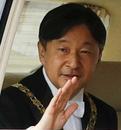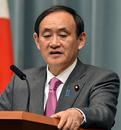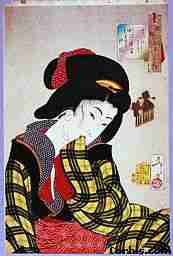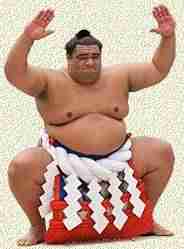| FACT AT A GLANCE | ||
|---|---|---|
| Full country name | Japan (Nippon) | |
| Area | 337,435 km (234,010 square mile) | |
| Population | 125 Million | |
| Capital city | Tokyo (Population 10 Million) | |
| People | Japanese | |
| Language | Japanese | |
| Currency | Yen | |
| Religion | Shinto, Buddhist | |
| Government | Constitutional Monarchy | |
| Flag |  National
Flag of Japan
National
Flag of Japan | |
| Head of State |  His
Majesty Emperor Akihito His
Majesty Emperor Akihito | |
| Prime Minister |  His
Excellency Suga Yoshihide, Prime Minister of Japan His
Excellency Suga Yoshihide, Prime Minister of Japan | |
| The Cabinet | Japanese Prime Minister's cabinet | |
CULTURE OF JAPAN
 Japan has one of the
richest cultre in the world. Until the last century, the main
influences on Japanese art came from China and Korea, but a distinct
Japanese aesthetic was present from early on. There is a fascination with
the ephemeral (such as in ikebana, the art of flower arrangement),
with the unadorned, and with forms that echo the randomness of
nature. A gift for caricature is also present, from early Zen ink
paintings right up to the manga (comics) of contemporary Japan.
There is a wildness and passion and an interest in the grotesque or
the bizarre visible in many works, from Buddhist scrolls depicting
the horrors of hell to the highly stylised renderings of body parts
in the wood block prints of the Edo period. The Japanese aesthetic
is writ large in its architecture, from graceful Shinto shrines and
Buddhist temples, to elaborate castles and practical gossamer-thin
houses (built to keep cool in summer and to crumple lightly in
earthquakes). Precise physical composition is also evident in Japanese
gardens, meticulously planned no matter how haphazard they may
look.
Japan has one of the
richest cultre in the world. Until the last century, the main
influences on Japanese art came from China and Korea, but a distinct
Japanese aesthetic was present from early on. There is a fascination with
the ephemeral (such as in ikebana, the art of flower arrangement),
with the unadorned, and with forms that echo the randomness of
nature. A gift for caricature is also present, from early Zen ink
paintings right up to the manga (comics) of contemporary Japan.
There is a wildness and passion and an interest in the grotesque or
the bizarre visible in many works, from Buddhist scrolls depicting
the horrors of hell to the highly stylised renderings of body parts
in the wood block prints of the Edo period. The Japanese aesthetic
is writ large in its architecture, from graceful Shinto shrines and
Buddhist temples, to elaborate castles and practical gossamer-thin
houses (built to keep cool in summer and to crumple lightly in
earthquakes). Precise physical composition is also evident in Japanese
gardens, meticulously planned no matter how haphazard they may
look.The two most famous Japanese performance traditions are kabuki (melodramatic theatre of spectacle) and Noh (formal masked theatre), both of which can be seen in Tokyo, Kyoto and Osaka. Ancient Japanese gagaku music uses drums, and Japanese instruments resembling the lute, plucked zither, oboe and flute. Pop music is massive in Japan: indigenous groups usually feature a gorgeous lead singer of irrelevant talents. Girl punk groups have recently been getting a good airing in the hungry world of indie music.
Much of Japan's early literature was written by women, partly because men wrote in imported Chinese characters while women wrote in Japanese script. Among these early female authors is Murasaki Shikibu, who wrote perhaps Japan's most important work of literature, The Tale of Genji, about the intrigues of early Japanese court life. The revered poet, Matsuo Basho, invented just-so haiku poetry in the 17th century. More modern literati include controversial Yukio Mishima, provocative Murakami Ryu and cool cat Banana Yoshimoto.
Set aside several years if you want to learn to read Japanese. Japan has one of the most complex writing systems in the world, using three different scripts, the Hiragana, Katakana, and the Kanji which is the most difficult form of writing characters (four if you include the increasingly used Roman script romaji). Fortunately, for visitors to Japan, it's not all bad news. Unlike other Asian languages, Japanese is not tonal and the pronunciation system is fairly easy to master. In fact, with a little effort, getting together a repertoire of travellers' phrases should be no trouble - the only problem will be understanding what people say back to you.
Shinto (the native religion of Japan), Buddhism (a much travelled foreign import originating in India), Confucianism (a Chinese import that is less a religion than a code of ethics), and even Christianity all play a role in contemporary Japanese social life, and are defining in some way of the Japanese world view. Religions for the most part, are not exclusive of each other. Shinto grew out of an awe for manifestations of nature such as sun, water, rocks, trees and even sounds. All such natural features were felt to have their god and shrines were erected in particularly sacred spots. Many Shinto beliefs were incorporated into Japanese Buddhist practices after its introduction in the 6th century.
Eating is half the fun of being in Japan, and the adventurous eater will be delighted to know that Japanese food is far more than the sushi, tempura and sukiyaki for which it is best known in other countries. With the exception of shokudo (all round eateries) and izakaya (the equivalent of a pub with meals), most Japanese restaurants specialize in one type of cuisine. In a cook-it-yourself okonomiyaki restaurant, diners choose a mixture of meat, seafood and vegetables to fry up in a cabbage and vegetable batter; a robatayaki is a rustic drinking restaurant specializing in charcoal grills. There are a variety of cook-at-your-table restaurants where you'll end up eating sukiyaki (thinly sliced beef, vegetables and tofu cooked in broth), shabu-shabu (beef and vegies cooked by swirling them in broth and then dipped in sauces) or nabemono (a participatory fry-up, with each diner putting in ingredients from trays of prepared raw food)! ! .
It 's possible to eat relatively cheaply by sticking to humble shokudo, or eating bento boxes (set meals) from cheaper restaurants or cafeteria-style places. Drinking is the glue that holds Japanese society together. It is practiced by almost every adult, male or female, and a good number of teenagers. Beer is the favourite tipple of the Japanese and it's dispensed everywhere from vending machines to temple lodgings. Sake (rice wine) is served warm or cold, with the warm stuff especially likely to go straight to your head. Sake hangovers are memorable, so drink carefully. Japanese green tea contains a lot of vitamin C and caffeine. It's very healthy and refreshing and is said by some to prevent cancer.
 NATIONAL SPORTS OF JAPAN
NATIONAL SPORTS OF JAPANSumo has been around for 2,000 years and has been a professional sport since the days of the shoguns. Every year six 15-day tournaments, or basho, are organized during odd-numbered months. The January, September, and May tournaments are held at the Kokugikan in Tokyo's Ryogoku Ward. Tickets are available at outlets, although they sell out quickly.
Sumo is a competitive contact sport where a wrestler (rikishi) attempts to force another wrestler out of a circular ring (dohyō) or to touch the ground with anything other than the soles of the feet. The sport originated in Japan, the only country where it is practiced professionally. It is generally considered to be a gendai budō (a modern Japanese martial art), though this definition is incorrect as the sport has a history spanning many centuries. Many ancient traditions have been preserved in sumo, and even today the sport includes many ritual elements, such as the use of salt purification, from the days when sumo was used in the Shinto religion. Life as a rikishi is highly regimented, with rules laid down by the Sumo Association. Most sumo wrestlers are required to live in communal "sumo training stables" known in Japanese as heya where all aspects of their daily lives—from meals to their manner of dress—are dictated by strict tradition.
In addition to its use as a trial of strength in combat, sumo has also been associated with Shinto ritual, and even certain shrines carry out forms of ritual dance where a human is said to wrestle with a kami (a Shinto divine spirit). It was an important ritual at the imperial court. Representatives of each province were ordered to attend the contest at the court and fight. They were required to pay for their travels themselves. The contest was known as sumaino sechie, or "sumai party."
JAPAN'S INTERNATIONAL TRADE
Japanese exports growth rapidly after the second world war. Over the past decades, both the composition and the reputation of Japanese products from Japan specially Japanese New Cars and Electronic products changed profoundly. Because of the success in export of certain Japanese products, Japan is now a heavy export-dependent country. For example, more than half of all Japanese Automobiles built in Japan are exporting almost all countries around the world.
The growth of Japanese exports after 2nd world war was truly phenomenal. In the early 1950s, Japanese products had a reputation for poor quality in the export market. However, this image changed dramatically during the 1970s. Japanese steel, ships, watches, television receivers, automobiles (both New and used Japanese cars), semiconductors, and many other goods developed a reputation for being manufactured to high standards and under strict quality control. The Japanese were the acknowledged world leaders for quality and design in the 1980s for some of these products. This rise in product quality also increased demand for Japanese exports.